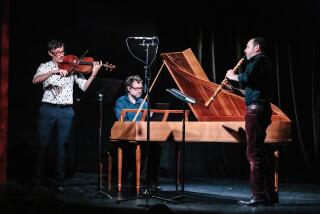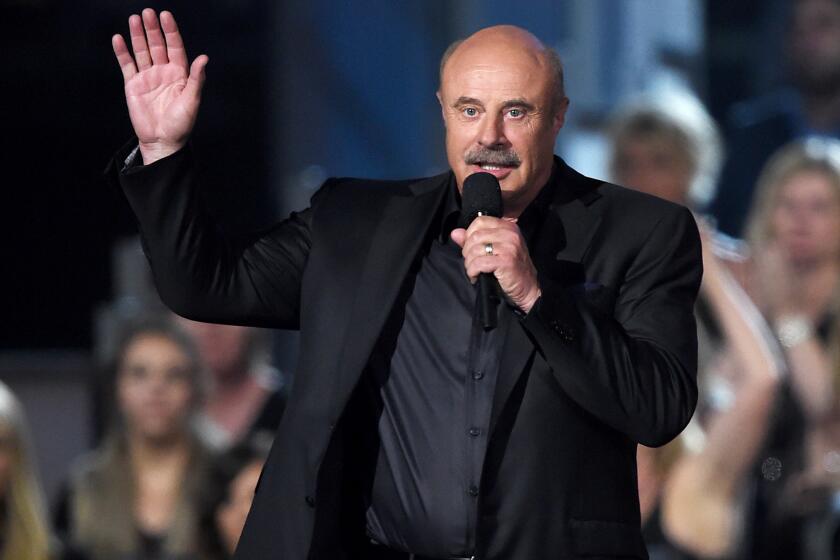Kindred spirits in outlook
- Share via
On paper, the worlds of Debussy and Toru Takemitsu appear separated by time and culture. The French impressionist composer died in 1918, and the famed Japanese composer lived from 1930 to 1996, but connections of style, approach and handling of space and color connect the two, not to mention a reciprocal gaze from west to east and back in their music.
That theme, of composers connecting across history and cultural distance, underscored the Southwest Chamber Music concert Sunday in Pasadena’s Boston Court. The intelligent and vibrant chamber music ensemble is celebrating its 20th anniversary season and has a habit of doing the right things.
For a chamber encounter of this delicacy, the acoustically warm but crisp Branson room at Boston Court proved ideal. The musicians -- flutist Lisa Edelstein (replacing regular Lawrence Kaplan), violist Jan Karlin, the agile and luminous harpist Amy Wilkins and double bassist Tom Peters -- captured the requisite spirits of the music.
For Peters, that spirit had a more avant-garde leaning than the other music on the bill, as he worked with the engaging challenges of two pieces by Japanese composer Toshi Ichiyanagi, whose work was influenced by John Cage. “Stanzas” is an aleatoric, Cage-ian piece, an abstract assembly of tones and extended techniques but, as with Cage’s music, also contemplative. Ichiyanagi’s “Generation of Spaces,” by contrast, is through-composed. It also has an improvisational air but settles into a softly driving rhythm. Peters handled the music masterfully.
This concert’s anchor was Takemitsu’s “And then I knew ‘twas wind,” a trio for flute, viola and harp from 1992 partly inspired by the instrumentation and notes of Debussy’s Sonata for Flute, Viola and Harp, which closed the program in a happy heap of sonorities.
More subtly, Takemitsu’s music was miraculous for its ability to appeal to head and heart, amid sterner stuff of 20th century serious musical discourse. Similarly, Debussy’s music sets itself apart from late romanticism and early modernism by being both beautiful and smart.
Such an operative duality was felt in Takemitsu’s “Air for Solo Flute,” the final piece he completed, in 1995. Edelstein nicely conveyed the work’s mating of serenity and tension, in the harmonic palette and sense of structure. A morphing four-note motif is the last thing we hear, and it lingers in the mind.
“Toward the Sea III,” performed by Edelstein and Wilkins, is a programmatic piece, evoking sea-related imagery and sensations -- sea spray, cresting waves and the lulls between, a vast expanse beyond the shore.
In this context, Debussy, whose Sonata was performed last, was the “straight man” of the program, but his increasing adventurism in 1915 -- while battling the cancer that would kill him -- blended with his natural lyricism. It sounded hopeful and probing and moving, nearly a century later.
More to Read
The biggest entertainment stories
Get our big stories about Hollywood, film, television, music, arts, culture and more right in your inbox as soon as they publish.
You may occasionally receive promotional content from the Los Angeles Times.










